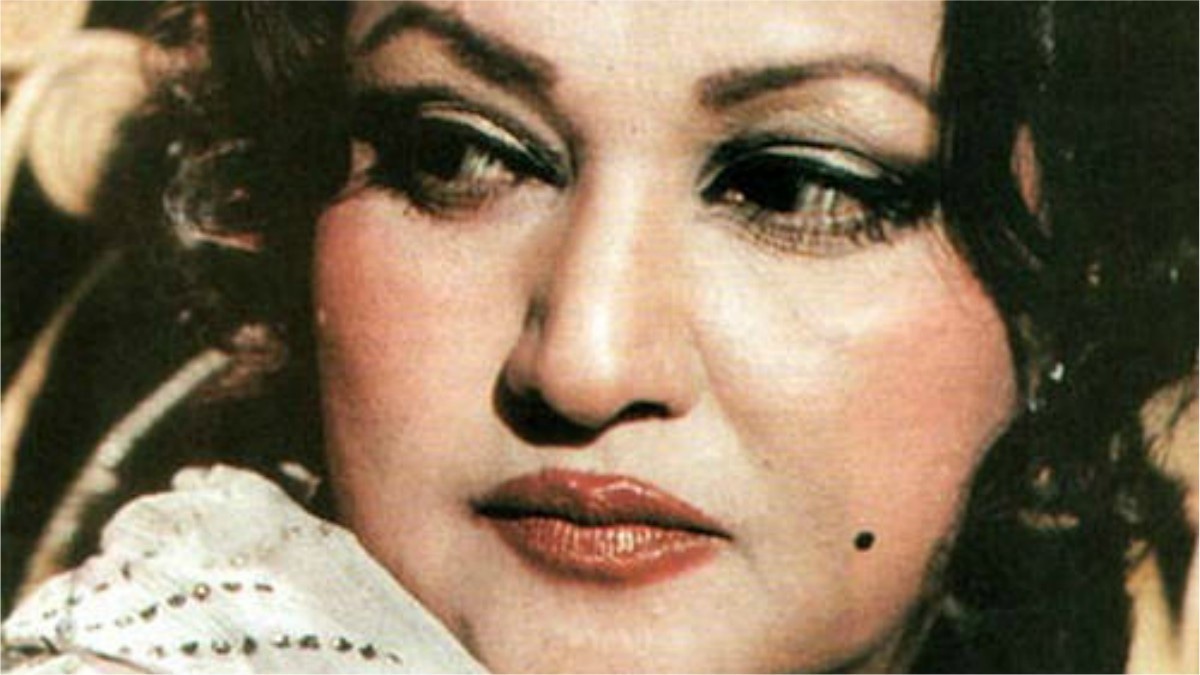Madam Noorjehan's music is eternal: Journey through Gul-e-Daudi
Gul-e-Daudi is a love story.
It was birthed and delivered with full consciousness of the form of the boy-meets-girl love story. It is not an autobiographical story but still a deeply personal one.
At its core is an idea or perhaps a feeling I couldn’t put into words until long after I had finished the final cut of the film.
The initial idea for what has become our film Gul-e-Daudi came from a film technique dating back to the era of silent movies, far before synchronised sound came to the moving pictures. This was to cross-fade two individual shots to convey a sense of passage of time.
Personally, the passage of time had been on my mind at the time. I was 29 years old and found it to be a very strange age indeed. The racket and clamour of my roaring twenties was now decidedly behind me and the crystalline anointment of being 30 and, perhaps, certifiably adult faced me.
How grown up did I actually feel?
It was hard to say then and, admittedly, hard to say now. Meanwhile, close friends were getting married; some, already married, having children; some, married earlier, now divorcing; some losing their parents or loved ones to disease, estrangement or old age.
It appeared, at the aforementioned strange age of 29, that I had lived just long enough for a certain cyclical trend to life and experience to be apparent, felt and, to some extent, lived.
I had now seen my fair share of beginnings, middles and endings.
From birth to death with so many turns in between - some dramatic sharp corners, some flatter curves - was life and the passage of time with a myriad of opportunities, taken or missed…inevitable? I looked back through my twenties, my first complete decade as a fully conscious adult, to see what had been lost and what had been gained.
My frequent muse and inspiration, Mr. Zia Mohyeddin, after seeing the film, put it into words for me: gardish-e-rung-e-chaman. The inevitable passage of all and everything in between.
In order to prevent the conveyance of the above as airy contemplation, Gul-e-Daudi must be a human story first and foremost. Crucial to this are both our performers as well as the nature of their performances.
I began with the central couple, played by Ismat Jawwad and Usman Latif, who are married to each other in real life.

Over the course of a couple of months, we met and ‘rehearsed’.
I use quotation marks as these were not conventional rehearsals: I drew from the methodologies of Stanislavsky, Meisner, psychotherapy, the Theatre of the Absurd and even transcendental meditation to create experiences where both would become comfortable with each other on camera, access real emotions (ones often buried hastily), bring them to the fore of their being and express them with their entire bodies.

All the performers in the film are not professional actors. Nearly all of them were subjected to a curious mixture of the techniques discussed above in order to generate pathos for the audience, without the crutch of dialogue and in front of what is quite obviously a bare studio set. Nearly all walked away excited, relieved or a bit befuddled.
I’m proud of our work together.
At some point in the rehearsal process, both Ismat and Usman approached me with some trepidation. "We’ve been married for eight years now…how will we genuinely feel the initial stages of being attracted to each other?"
Fair point.
We worked through it in rehearsals, re-lived their real-life first meeting, courtship and subsequent marriage together. The key to their performances would be the process. The only ‘ability’ I required was to feel and express as we do every day as human beings. Ismet and Usman committed fully to the process whereas I worked to earn their trust, to be there for them as much as possible.

Now a curious feature to this process is that after a combination of improvisation, firmer direction and simply being in the moment, I don’t really know how they did what they did. There is a moment very precious to me which passes by fairly quickly in the film. The characters played by Ismet and Usman are in the throes of a new and passionate love.
During a quiet moment, Usman is perched on Ismet’s knees, simply looking at her. There is a look in his eyes which, to me, conveys everything from the thrill of a new discovery to depth of a lasting connection. It’s moments like these, captured without deliberation but through preparation, which make me excited to keep continuing my work with actors.
The perfect soundtrack
To many who will see this film, the most important element will be the music. I was fortunate to be commissioned for this project by EMI Pakistan and had access to their entire, glittering digitised archive. I began with old songs by different artists for various sections of the film.

Something remained amiss. I then thought of one artist, whose work had enough range to cover both the minute and the expansive in both romance and the human experience; I was led to Madam Noorjehan.
The humanistic range of Madam’s ourve, the sheer power and emotional range of her voice, the brevity and profundity with which her lyricists and producers expressed the machinery of love with both small and capital L.
I would say that once the music was placed, Madam re-wrote my film for me. With humility in such a great artist’s wake, I now present the film to you as a tribute to her, a love-song to questioning fate filled with love-songs steeped in the process of being alive.




